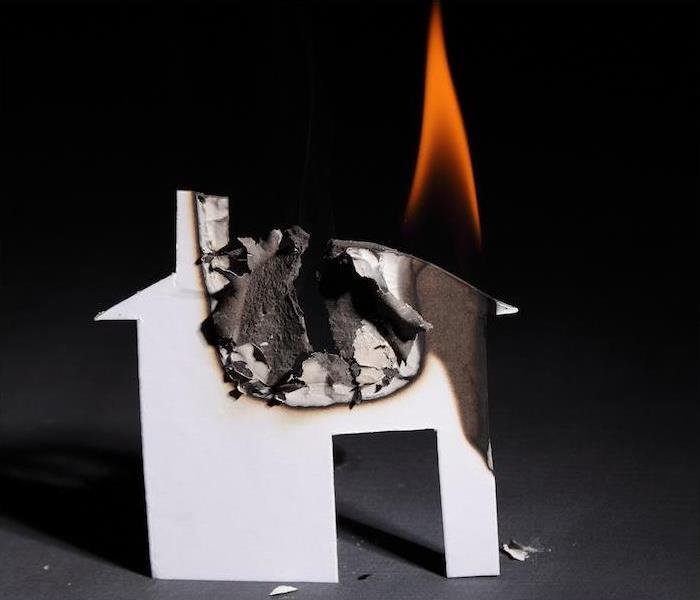The 4 Components of Fire & Why They’re Important | SERVPRO® of Anniston, Gadsden and Marshall County
1/6/2022 (Permalink)
 If your home or business has any damage, SERVPRO of Anniston, Gadsden and Marshall is ready around the clock to help you recover.
If your home or business has any damage, SERVPRO of Anniston, Gadsden and Marshall is ready around the clock to help you recover.
Did you know that a square can also be referred to as a tetrahedron? For those of us who don’t remember what that fancy word means, in short, it’s something that has four faces.
Don’t run off! We aren’t discussing geometry here. But we do want to discuss the fire tetrahedron.
Simply put, there are four components that create a fire—and removing any of them can help put the fire out.
Fuel. This is something that will make a fire burn! Many things can fuel a fire, including wood, plastic, and other organic or inorganic materials.
Heat. You will need enough heat to make the fuel burn. Depending on what is burning, the amount of heat will vary. But every object has a threshold at which point it will either ignite or melt.
Oxygen. Like all things in the world, air (oxygen) is what will help fires live. Oxygen will fuel a fire as easily as the other two items listed above.
Chemical Chain Reaction. This provides the heat necessary to maintain a fire. It causes a chain reaction, which will keep the fire burning and growing.
Cool it. The most common step to take is to put something cool onto a fire. If it’s water, which is the most common approach, you have to be aware that it might take a lot because heat can make it evaporate quickly.
Smother it. Another approach would be to exclude the oxygen from a fire. If something can’t breathe, it can’t live…and a fire is no different. That’s why we are taught from a young age to “stop, drop and roll” if our clothing catches on fire—doing so smothers the fire by keeping it from oxygen.
Starve it. Eliminate the fuel sources that can help feed a fire. As long as a fire doesn’t have the adequate fuel, it will eventually go out. In some cases, a containment can be created by burning areas on purpose, which creates a boundary of starvation.
Interrupt the chain reaction. Now we’re getting a little fancier! Break the chemical reaction by using certain chemicals. A chemical called halon was previously used as a fire retardant, but since it has an elevated potential for ozone depletion, it has been banned.
If the fire tetrahedron makes a wreck of your home or business, we’re ready around the clock to help you recover. Contact SERVPRO anytime for fast, thorough cleanup and recovery after a fire.



 24/7 Emergency Service
24/7 Emergency Service